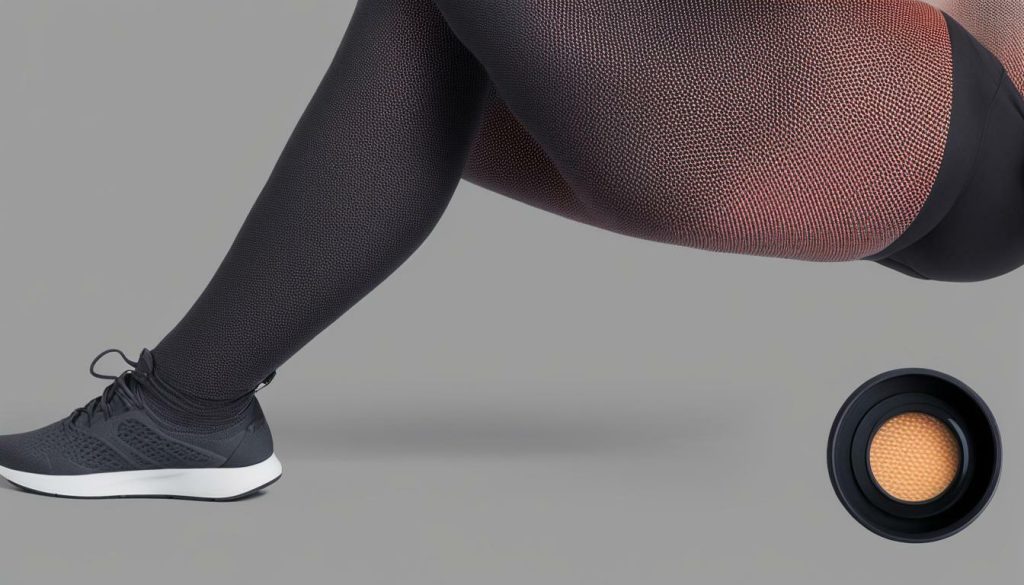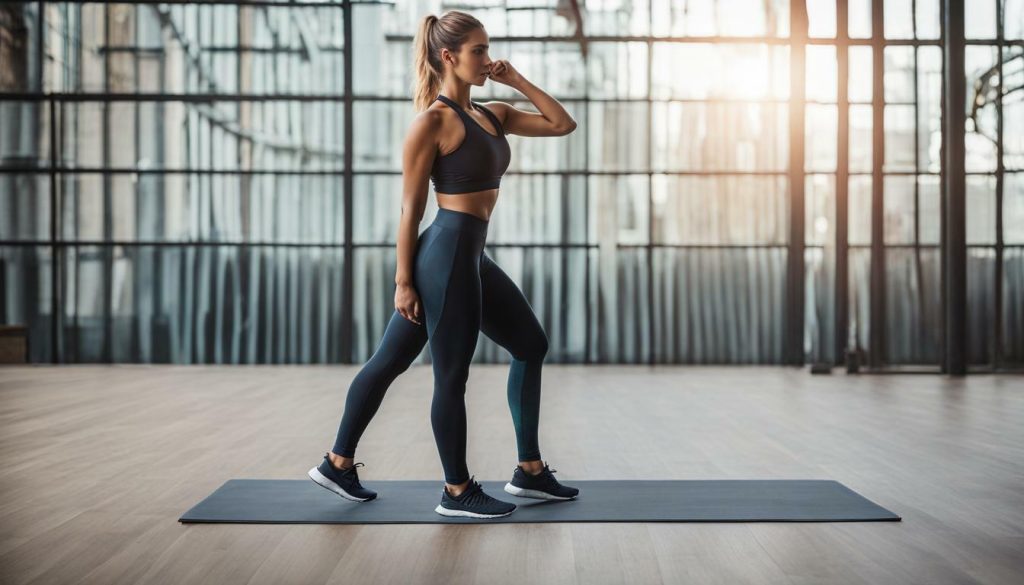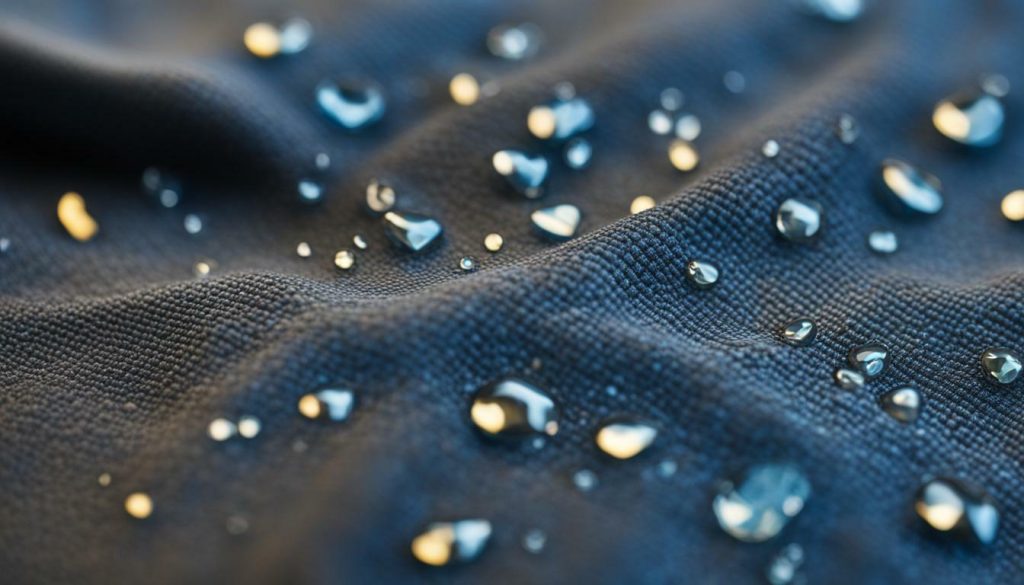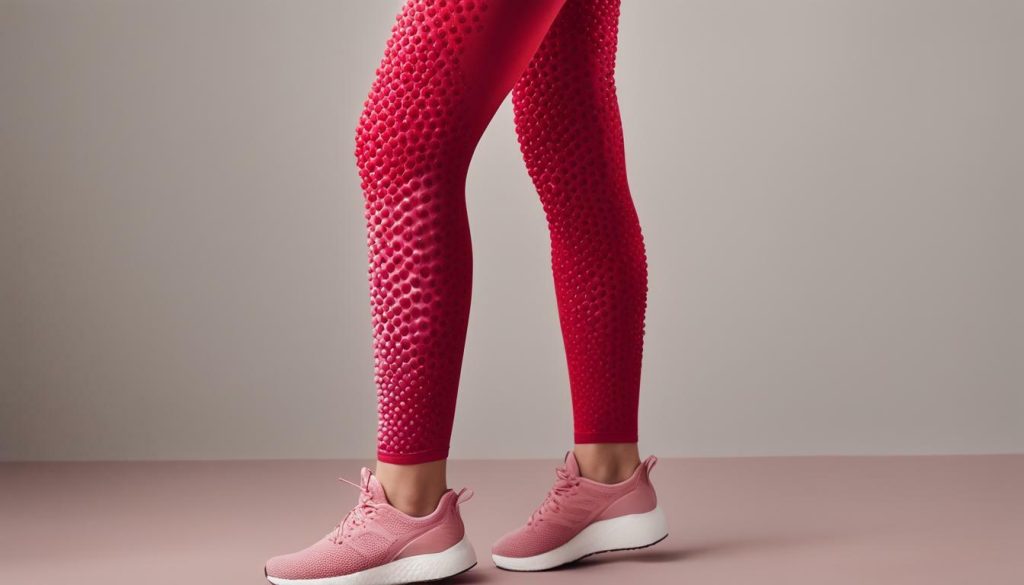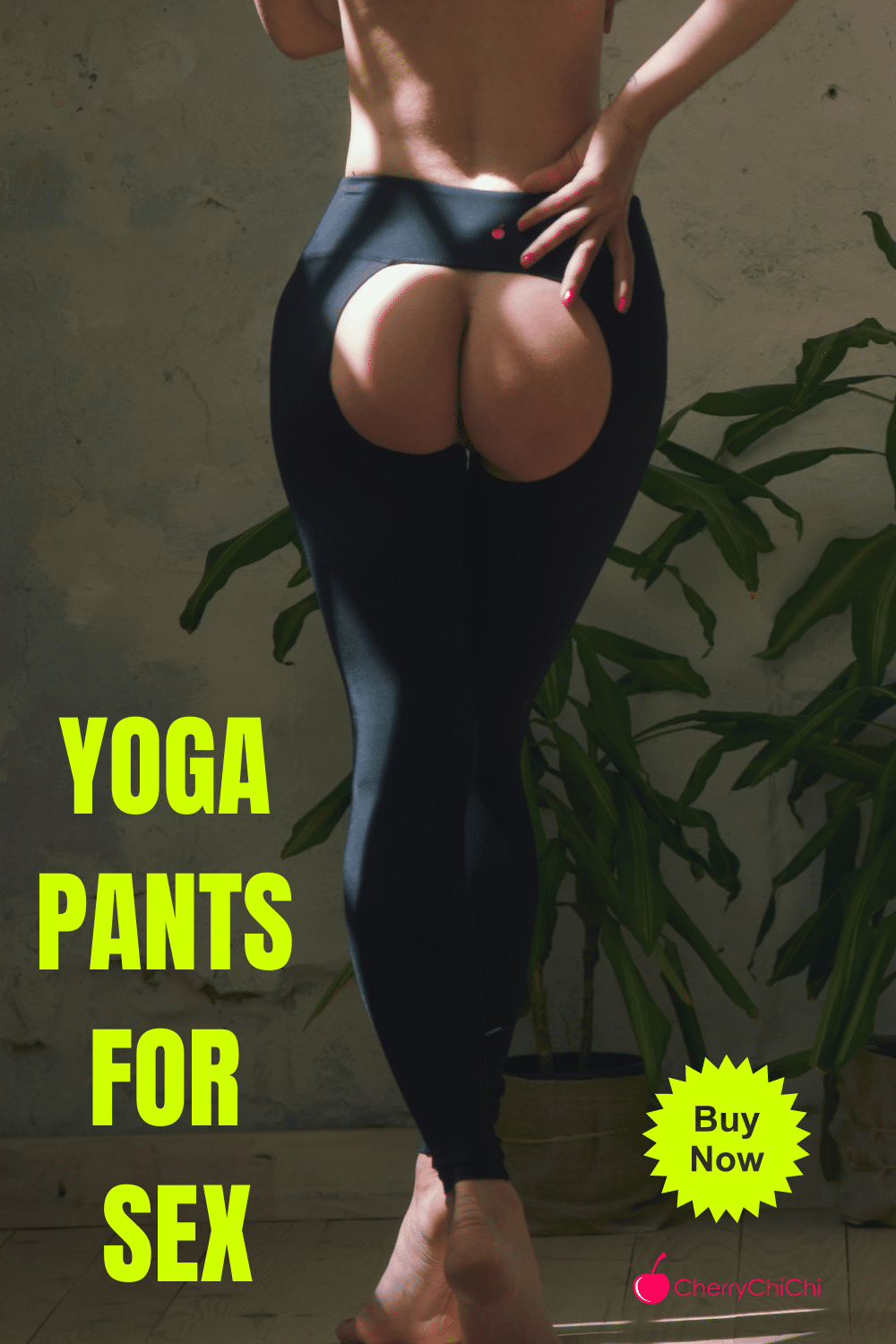
Leggings have become a fashion staple in recent years, but have you ever wondered if they might be doing more harm than good? Recent studies suggest that these stretchy bottoms may not be as innocent as they seem. From potential health risks to environmental concerns, it’s time to take a closer look at whether leggings are truly bad for you.
Key Takeaways
- Cheap synthetic materials used in leggings can lead to heat and irritation.
- The tightness of leggings can cause skin rubbing and cracking.
- Trapped sweat in leggings can increase the risk of infections like ringworm and jock itch.
- Leggings have been linked to reduced fertility and acne breakouts.
- Wearing leggings to bed may provide benefits but also increases the risk of yeast infections and urinary tract infections.
The Potential Health Risks of Wearing Leggings
Recent studies have shed light on the potential dangers that come with slipping into a pair of leggings. These trendy, skin-tight garments have become a wardrobe staple for many, but they may not be as harmless as they seem. Leggings, especially those made from cheap synthetic materials, can have negative effects on the body and overall health.
One of the main concerns with leggings is their lack of breathability. Synthetic materials like polyester and nylon do not allow air to circulate, leading to heat and moisture buildup. This can result in discomfort, skin irritation, and even fungal infections. Leggings made from breathable fabrics like cotton or moisture-wicking materials are a better choice for maintaining skin health.
Furthermore, the tightness of leggings can cause friction against the skin, leading to skin rubbing, chafing, and even cracking. This can be particularly problematic for individuals with sensitive skin or underlying dermatological conditions. To minimize these risks, it is important to choose leggings that fit properly and offer a comfortable level of compression.
Additionally, the trapping of sweat in leggings can create a moist environment that is conducive to the growth of bacteria and fungi. This can increase the likelihood of developing infections such as ringworm and jock itch. It is crucial to practice good hygiene, including regularly washing leggings and avoiding wearing them for extended periods of time, especially in hot and humid conditions.
Stay tuned for the next section!
| Health Risks of Wearing Leggings | Potential Dangers |
|---|---|
| Lack of breathability | Heat, discomfort, and skin irritation |
| Tightness | Skin rubbing, chafing, and cracking |
| Trapping of sweat | Increased risk of infections like ringworm and jock itch |
The Breathability Battle: Synthetic Materials and Heat
One of the main culprits behind the health risks of leggings lies in their choice of materials. Many leggings are made from cheap synthetic fabrics that lack breathability, causing discomfort, heat, and irritation for the wearer. These synthetic materials trap heat and moisture against the skin, creating a less than ideal environment for your body.
When you wear leggings made of these synthetic materials, your body struggles to regulate its temperature and sweat cannot evaporate efficiently. This can lead to increased sweating and discomfort, especially during physical activities or in hot weather. The lack of breathability can also contribute to skin irritation and rashes, making your leggings more than just a fashion choice.
“Wearing leggings made from cheap synthetic materials can turn your legs into sweaty saunas, which no one wants!”
So, what is the solution? Opt for leggings made from breathable and natural materials such as cotton or bamboo. These fabrics allow air to circulate, helping to regulate your body temperature and reducing the risk of irritation and discomfort. Additionally, choosing leggings with moisture-wicking properties can help combat sweat and keep you feeling dry and fresh.
The Importance of Finding Breathable Leggings
When it comes to workout gear or everyday wear, the breathability of leggings should be a key consideration. Investing in leggings made from breathable materials not only enhances your comfort but also helps to mitigate potential health risks. Remember, the right choice of leggings can make all the difference in creating a healthier and more enjoyable experience for your body.
Skin Rubbing and Cracking: The Tightness Factor
As much as we love the snug fit of leggings, their tightness can spell trouble for our skin. The constant pressure and friction caused by overly tight leggings can lead to skin rubbing and cracking, leaving us itching and uncomfortable. It’s like a wrestling match where our skin is the unfortunate opponent. But fear not, for armor of comfort exists.
One way to combat the skin trouble caused by tight leggings is to opt for a larger size or choose leggings with a more forgiving stretch. Giving our skin some breathing space can help prevent the rubbing and cracking that often plagues us. After all, who wants to be left with legs that resemble a crumbled pastry?
Another solution is to explore the vast selection of leggings made from softer, more elastic fabrics. These materials offer a greater range of motion and flexibility, reducing the chances of skin irritation. Embracing leggings that feel like a gentle hug rather than a bone-crushing squeeze can be a game-changer for our skin’s health.
So, the next time you’re contemplating slipping into those tight leggings, consider the potential consequences for your skin. Remember, beauty shouldn’t have to be painful. Embrace the fact that comfort and style can coexist. Your skin will thank you, and you’ll be one step closer to conquering the world in leggings that not only look fabulous but feel fabulous too.
| Leggings Material | Skin Health Rating |
|---|---|
| Nylon/Spandex Blend | 🌟🌟 |
| Cotton Blend | 🌟🌟🌟 |
| Soft Modal | 🌟🌟🌟🌟 |
| Bamboo Fabric | 🌟🌟🌟🌟🌟 |
Table 1: Skin Health Ratings of Different Leggings Material
Trapped Sweat and Infections: A Moist Environment
Wearing leggings for extended periods can create a moist environment that becomes a breeding ground for infections. The lack of breathability in leggings made from cheap synthetic materials is a major culprit behind this. These fabrics trap sweat against the skin, leading to discomfort and increased risk of infections like ringworm and jock itch.
One study found that synthetic leggings can increase the temperature of the skin, creating a favorable environment for bacteria and fungi to thrive. The combination of sweat, heat, and the tightness of leggings provides the perfect conditions for infections to take hold. It’s like a cozy little spa for bacteria, and trust me, they don’t need a spa day.
To make matters worse, the snug fit of leggings can cause the fabric to rub against the skin, leading to irritation and inflammation. This further compromises the skin’s barrier function and increases the risk of infection. So not only are leggings making you sweat, but they’re also irritating your skin in the process. It’s like a double whammy of discomfort.
| Infections from Leggings | Prevention Tips |
|---|---|
| Ringworm | Wear breathable leggings made from natural fibers like cotton or bamboo. Avoid wearing leggings for extended periods, and make sure to wash them regularly. |
| Jock Itch | Avoid synthetic leggings that trap moisture. Opt for moisture-wicking fabrics and change out of sweaty leggings as soon as possible. |
So, if you’re planning to rock those leggings all day long, be prepared for the potential consequences. It’s essential to prioritize your comfort, but it’s equally important to protect yourself from the risks associated with prolonged leggings wear. Consider opting for leggings made from breathable and moisture-wicking materials, and remember to give your skin a chance to breathe by taking breaks from wearing leggings for extended periods. Your skin will thank you, and you’ll reduce the chances of unwanted visitors setting up shop in your leggings-induced sauna.
Fertility and Acne: Surprising Side Effects
It may come as a surprise, but leggings could potentially impact your fertility and contribute to acne breakouts. Recent studies have revealed a connection between wearing leggings and reduced fertility in both women and men. The tightness and lack of breathability in leggings made from cheap synthetic materials can disrupt the natural airflow to the pelvic region, affecting sperm count and motility in men, as well as causing hormonal imbalances in women. So, if you’re planning to start a family or struggling with fertility issues, it might be worth considering the impact of your leggings on your reproductive health.
But that’s not all. Leggings can also be the underlying cause of those pesky acne breakouts on your skin. The snug fit of leggings combined with the non-breathable fabric creates a perfect environment for bacteria to thrive. When sweat and oil are trapped against your skin, it can clog your pores and lead to inflammation and breakouts. So, if you’re constantly battling with acne, it might be time to take a closer look at the clothes you’re wearing, including those beloved leggings in your wardrobe.
It’s important to note that while leggings can potentially impact fertility and contribute to acne breakouts, the degree to which they affect individuals can vary. Some people may not experience any negative effects, while others may notice a significant difference. It ultimately depends on multiple factors such as the quality of the leggings, the frequency of wear, and individual sensitivities.
So, before you slip into your favorite pair of leggings, it’s worth considering the potential impact on your fertility and skin health. If you’re concerned about these issues, there are alternative clothing options available that offer both comfort and style without compromising your well-being. Remember, it’s always wise to prioritize your health and make informed choices about what you wear.
Exposure to Toxins and Harmful Microfibers
You might not realize it, but your leggings could be exposing you to a cocktail of toxic chemicals and harmful microfibers. Recent studies have found that leggings made from cheap synthetic materials can contain a range of hazardous substances that have been linked to various health issues.
The synthetic fibers used in leggings, such as polyester and nylon, are often treated with chemicals like formaldehyde, which is known to be carcinogenic. These chemicals can be absorbed through the skin, potentially causing allergies, skin irritations, and respiratory problems. In fact, a study conducted by the Green Science Policy Institute found that leggings can release toxic flame retardants when exposed to heat, increasing the risk of respiratory and reproductive issues.
But it’s not just the toxic chemicals that pose a threat. Leggings, especially those made from microfibers, release tiny plastic particles known as microplastics. These microplastics can be ingested or inhaled, leading to long-term health consequences. Additionally, when we wash our leggings, these microfibers end up in our waterways, contributing to the pollution of our oceans and ecosystems.
So, what can you do to protect yourself? First and foremost, choose leggings made from natural, breathable materials like organic cotton or bamboo. These fabrics are not only better for your health but also more environmentally friendly. If you must wear synthetic leggings, opt for higher-quality brands that prioritize chemical-free production and use recycled materials. Lastly, consider investing in a microfiber-catching washing bag that collects the microplastics released during laundry.
| Exposure to Toxins and Harmful Microfibers | Actions to Minimize Exposure |
|---|---|
| Avoid leggings made from cheap synthetic materials. | Choose leggings made from natural, breathable materials like organic cotton or bamboo. |
| Opt for higher-quality brands that prioritize chemical-free production and use recycled materials. | Research and purchase leggings from brands that focus on sustainability and eco-conscious practices. |
| Use a microfiber-catching washing bag when laundering your leggings. | Invest in a microfiber-catching washing bag to minimize microplastic pollution from washing your leggings. |
By taking these precautionary measures, you can reduce your exposure to harmful chemicals and microfibers while still enjoying the comfort and style of leggings. Remember, it’s not just about fashion; it’s about your health and the health of our planet.
Environmental and Worker Health Concerns
The consequences of wearing leggings extend beyond personal health, with the production of these garments having a detrimental impact on the environment and workers. The synthetic fabrics used in leggings, such as polyester and nylon, are derived from non-renewable resources and require a significant amount of energy to produce. This production process contributes to greenhouse gas emissions, air and water pollution, and the depletion of natural resources.
Not only do the production practices harm the environment, but they also pose risks to the health and safety of workers. The manufacturing of synthetic fabrics involves the use of toxic chemicals, which can have long-lasting effects on the individuals involved in the production process. Workers may be exposed to hazardous substances that can cause respiratory issues, skin irritations, and other health problems.
Furthermore, the fashion industry’s fast-paced demand for leggings and other clothing items often leads to unethical labor practices, including low wages, poor working conditions, and long hours. This exploitation of workers in the pursuit of mass production and cheap prices raises serious ethical concerns.
Table: Comparison of Environmental Impact of Leggings
| Environmental Impact | Synthetic Leggings | Environmentally-friendly Alternatives |
|---|---|---|
| Energy Consumption | High | Low |
| Water Usage | Significant | Minimal |
| Greenhouse Gas Emissions | High | Low |
| Chemical Usage | Extensive | Minimal |
To mitigate the environmental and worker health concerns associated with leggings, it is important for consumers to make conscious choices when purchasing and wearing these garments. Opting for leggings made from sustainable materials such as organic cotton or bamboo can help reduce the negative impact on the environment. Additionally, supporting brands that prioritize fair trade practices and ethical manufacturing processes can contribute to a more sustainable and responsible fashion industry.
By considering the broader implications of our fashion choices, we can strive towards a more sustainable future where personal style and well-being go hand in hand with environmental preservation and worker welfare.
Nighttime Wear: Pros and Cons
Many people enjoy the comfort of wearing leggings to bed, but it’s important to be aware of both the benefits and potential risks. Let’s dive into the pros and cons of slipping into those cozy leggings before hitting the hay.
The Benefits
- Improved Circulation: Wearing leggings to bed can promote better blood circulation, especially for those who experience cold feet or have poor circulation. The snug fit of leggings can help keep your legs warm, preventing numbness and discomfort.
- Added Warmth: Leggings are made from insulating materials that provide an extra layer of warmth during the chilly nights. They trap body heat and prevent it from escaping, keeping you cozy throughout the night.
- Convenience: Wearing leggings to bed means you’re already dressed for the day ahead. If you’re someone who prefers to hit the snooze button a few extra times in the morning, this time-saving aspect can be a big win.
The Risks
- Yeast Infections: Leggings, especially those made from synthetic fabrics, can create a warm and moist environment, which is ideal for yeast growth. If you’re prone to yeast infections, it’s advisable to choose leggings made from natural, breathable materials or wear loose-fitting pajamas instead.
- Urinary Tract Infections (UTIs): Similarly, the tightness of leggings can put pressure on the genital area and hinder proper airflow, increasing the risk of UTIs. Opting for looser sleepwear can help prevent such infections.
It’s vital to strike a balance between comfort and health when deciding whether to wear leggings to bed. If you choose to wear leggings, consider opting for those made from breathable materials like cotton or bamboo. Remember to regularly wash your leggings to maintain good hygiene and reduce the risk of infections. Ultimately, listen to your body and make choices that promote both comfort and well-being.
| Pros | Cons |
|---|---|
| Improved circulation | Increased risk of yeast infections |
| Added warmth | Higher chance of urinary tract infections |
| Convenience |
The Personal Decision: Comfort vs. Health
Ultimately, the choice of whether to wear leggings comes down to your personal evaluation of comfort and potential health risks. While leggings have become a wardrobe staple for many, it’s important to consider the potential drawbacks they may have on your well-being.
When it comes to comfort, leggings offer a snug fit that is praised for its flexibility and ease of movement. They can be incredibly comfortable for lounging at home, working out, or running errands. However, it’s crucial to choose leggings made of high-quality materials that allow your skin to breathe. Cheap synthetic fabrics can cause heat and irritation, leading to discomfort and even skin problems. Opting for leggings made from natural fibers or moisture-wicking materials can help mitigate these issues.
On the other hand, the potential health drawbacks of leggings should not be ignored. The tightness of leggings can lead to skin rubbing and cracking, which can be uncomfortable and even painful. Moreover, the lack of breathability in some leggings can trap sweat, creating a moist environment that increases the risk of infections like ringworm and jock itch. These conditions can be itchy, bothersome, and require medical treatment.
In addition to skin-related concerns, leggings have also been associated with other health issues. Studies have suggested a potential link between reduced fertility in both women and men and prolonged, excessive wearing of tight leggings. Acne breakouts have also been reported, possibly due to the lack of air circulation and the friction caused by the fabric against the skin.
Furthermore, it’s important to consider the environmental and worker health concerns associated with leggings. The production of synthetic fabrics used in leggings contributes to pollution and can have negative impacts on the environment. Additionally, the workers involved in the manufacturing process may be exposed to harmful chemicals and face health risks.
In summary, the decision to wear leggings should be made with careful consideration of both comfort and potential health risks. Opting for leggings made from high-quality, breathable materials can help mitigate some of the discomfort and potential skin problems. It’s also important to listen to your body and give it occasional breaks from tight clothing. Ultimately, finding a balance between fashion and well-being is key. Remember, your health should never be compromised in the pursuit of style.
| Comfort Pros | Health Drawbacks |
|---|---|
|
|
“Leggings are like a double-edged sword – they can be cozy and fashionable, but they also come with potential health risks if not chosen wisely.”
So, the next time you slip into your favorite pair of leggings, take a moment to reflect on the potential trade-offs. Consider opting for high-quality leggings made from breathable materials to minimize discomfort and skin-related issues. Don’t forget to listen to your body and give it breaks from tight clothing to ensure good circulation. Fashion should enhance your confidence and well-being, so choose wisely and make the personal decision that suits you best.
The Final Verdict: Are Leggings Really Bad For You?
After examining the evidence, it’s time to deliver the final verdict on whether leggings are truly detrimental to your overall well-being. While there are certainly potential health risks associated with wearing leggings, it’s important to consider the context and individual circumstances.
Yes, leggings made from cheap synthetic materials can lack breathability, leading to discomfort, heat, and irritation. The tightness of leggings can also cause skin rubbing and cracking. And let’s not forget about the trapped sweat, which can create a moist environment, increasing the risk of infections like ringworm and jock itch.
However, it’s worth noting that leggings’ negative effects are not universal. Some individuals may experience acne breakouts, reduced fertility, or exposure to toxic chemicals and harmful microfibers. But these effects can vary from person to person. It’s also important to consider the environmental impact of the production of synthetic fabrics used in leggings and the potential health risks for workers.
Ultimately, the decision to wear leggings should be based on personal comfort and preference, while being mindful of potential health drawbacks. If you choose to wear leggings, opt for ones made from high-quality, breathable materials and ensure a proper fit. It’s also advisable to avoid wearing them for extended periods, especially during workouts, and to maintain good hygiene practices.
| Pros of Wearing Leggings | Cons of Wearing Leggings |
|---|---|
|
|
Conclusion
So, are leggings bad for you? The answer lies within your own considerations and priorities, as you weigh the potential health risks against the comfort and style of these popular garments.
Recent studies have shed light on the potential health risks associated with wearing leggings. From the lack of breathability in cheap synthetic materials to the tightness causing skin rubbing and cracking, leggings can have undesirable effects on your well-being. Additionally, trapped sweat in leggings can create a moist environment, increasing the risk of infections like ringworm and jock itch.
Surprisingly, leggings have also been linked to reduced fertility in both women and men, as well as acne breakouts. Their production using synthetic fabrics poses environmental concerns and can have negative effects on worker health. Furthermore, wearing leggings to bed may provide benefits such as improved circulation and warmth, but it also carries the risk of increased yeast infections and urinary tract infections.
Ultimately, the decision to wear leggings should balance your personal comfort and style preferences with the potential health drawbacks. It’s important to choose leggings made from breathable materials and to avoid excessively tight options. Regularly washing them and practicing good hygiene can also help minimize any potential risks.
Leggings have become a staple in many wardrobes, offering versatility and a fashionable look. While they may not be inherently bad for you, it’s crucial to be aware of the potential health risks and make an informed decision. So, whether you choose to rock your leggings or give them a pass, remember to prioritize your health and well-being above all.
FAQ
Q: Are leggings bad for your health?
A: Recent studies suggest that leggings can cause various health issues. While it ultimately depends on the individual, it’s important to be aware of the potential risks.
Q: What are the potential health risks of wearing leggings?
A: Wearing leggings made from cheap synthetic materials can lead to heat and irritation. The tightness of leggings can cause skin rubbing and cracking, and also trap sweat, increasing the risk of infections like ringworm and jock itch. Leggings have also been linked to reduced fertility, acne breakouts, exposure to toxic chemicals, and harmful plastic microfibers.
Q: Do leggings made of synthetic materials affect breathability?
A: Yes, leggings made of synthetic materials are often not breathable, which can lead to heat and irritation on the skin.
Q: Can wearing leggings cause skin rubbing and cracking?
A: Yes, the tightness of leggings can cause skin rubbing and cracking, leading to discomfort and potential skin issues.
Q: Are there risks of infections associated with wearing leggings?
A: Yes, leggings can trap sweat, creating a moist environment that increases the risk of infections like ringworm and jock itch.
Q: Can wearing leggings affect fertility or cause acne breakouts?
A: Surprisingly, leggings have been linked to reduced fertility in both women and men, and they can also contribute to acne breakouts.
Q: Is there a risk of exposure to toxic chemicals and harmful microfibers when wearing leggings?
A: Yes, there is a potential risk of exposure to toxic chemicals and harmful plastic microfibers due to the production of synthetic fabrics used in leggings.
Q: Are there environmental and worker health concerns associated with leggings?
A: The production of synthetic fabrics used in leggings can have negative environmental impacts and pose health risks to workers involved in the manufacturing process.
Q: What are the pros and cons of wearing leggings to bed?
A: Wearing leggings to bed can provide benefits such as improved circulation and warmth. However, there is a risk of increased yeast infections and urinary tract infections.
Q: Should I be concerned about the potential health drawbacks of wearing leggings?
A: It is up to individuals to decide whether the comfort and style of leggings outweigh the potential health drawbacks. Being aware of the risks and making an informed decision is essential.


